Our breakfast at Hotel Villa de Angel in Villa de Leyva was probably one of the best we've ever had while traveling. The ambiance was divine and the omelets heavenly - too bad we had to miss out on them twice more during our stay.
Oranges were hugely popular all over Colombia, a million times more than back home in Denver.
Neither Steven or I were wowed by the market but I did love seeing local women there.
Colombian (and Ecuadorian) strawberries were absolutely mammoth.
I would have given my eye teeth to have watched a mischievous child topple over this perfect display!
I couldn't begin to think what anyone would need these enormous paddles for unless they had their own chocolate factory!
We had known that Villa de Leyva was famous for its abundance of fossils from the Cretaceous and Mesozoic periods when this area was under the ocean. That was why we wanted to visit the Museo del Fósil, a small building built around a completely intact fossil of a 170-million-year-old Kronosaurus, an oceanic dinosaur, unearthed in the 1970s by a local farmer.
One of the things that made this fossil so special for me was that it was left in the exact spot where it was found, rather than bringing the fossil to a museum, possibly far away.
I asked Luis if the statue indicated an accident had occurred there and he assured me it was simply a shrine to the Virgin of Carmen.
The Latin phrase Ecce homo ("this is the man " or "behold the man”) were the words attributed to Pontius Pilate, the Roman governor of Judea, when he presented Jesus to the hostile crowd.
The Rosary Chapel was founded as a separate building next to the church in 1759.
The Sacristy, as always in a Catholic church, was where the priests' clothes, ornaments and other objects associated with worship were kept. Here though, it also served as the legacy of the Dominican community of friars since they first arrived in Colombia.
One room was devoted to items made from the 'local natives' or the indigenous people. Elaborate fabrics and blankets showed a wide textile production for both daily use and ceremonial occasions.
Also included were paintings of indigenous leaders:
An array of beautifully decorated candles:
This was, I have to admit, one of the spookiest rooms we've ever seen in a church or a museum!
In the Artists' Multiple Use Hall, we learned that the evangelical mission went beyond doctrine and taught the indigenous people diverse chores while also acknowledging their skills in basket making, pottery, goldsmith work and wood decorating and carving.
Before the discovery of the archaeological site, Spanish Conquistadors called this area infiernito because they thought it was diabolical and therefore labeled it as a site of pagan worship.
The first description of the site was made in 1847 by a Colombian army geographer who reported 25 half-buried stone columns.
An archaeologist, Alexander von Humboldt, believed that the site could be used to anticipate astronomical phenomena such as solstices and equinoxes, as indicated by the alignment of the stones with the sun and moon. The first formal archaeological excavations at the site were led by an anthropologist in 1981. These resulted in the declaration of the site as an archaeological park.
Using Google Translate, Luis explained that this was a collective tomb for the
high-ranking social and spiritual people in the Muisca community.
Inside, the rooms curved and flowed into each other, as though the entire house was cast in a single mold.
Rustic as it seemed, the clay cottage did offer a few modern conveniences – solar panels for hot water, toilets and sinks covered in colorful mosaic tiles, two floors with lounge and sleeping areas, and a fully functional kitchen.
It was interesting to learn that the house, toured by about 200 people a day, was built for visitors and never inhabited.
The three-nave interior had 17 chapels; this was just one of the incredible chapels.
Santa Rosa de Lima was yet another exquisite chapel.
Villa de Leyva's Plaza Mayor at night was a magical sight.
We had decided to spend four nights in the lovely village
not because there was so much to see and do in the village, but rather what there
was to see around Villa de Leyva. We had made arrangements last night at our
guesthouse to hire an English-speaking driver to take us on a four-hour tour to
four specific sites outside of town. Considering the staff spoke not one word
of English and we spoke only a little more Spanish, it was quite a feat to
arrange the tour! The driver was picking us up at 9 so, after enjoying a
scrumptious breakfast, we walked to the town’s Saturday weekly market. Luckily, that meant we could enjoy another stroll across Plaza Mayor.
People who have been reading this blog for a while know we always love going to markets in each town and especially weekly markets because they have a greater buzz. That was why we had been looking forward to the Saturday market in Villa de Leyva that had started at 4 am!
Scenes from the market:
Oranges were hugely popular all over Colombia, a million times more than back home in Denver.
Neither Steven or I were wowed by the market but I did love seeing local women there.
Colombian (and Ecuadorian) strawberries were absolutely mammoth.
I would have given my eye teeth to have watched a mischievous child topple over this perfect display!
I couldn't begin to think what anyone would need these enormous paddles for unless they had their own chocolate factory!
Luis, the young driver cum guide, who turned out to speak
almost NO English, very kindly said I could ask him to stop whenever I liked if
I wanted to take photos. That was very sweet of him but I don’t think he had
any idea how much I like to take photos!
He joked that we would get a two for one tour with him, i.e. a Spanish-language class in addition to the tour itself! Not what we had paid for and wanted but it was what we got! I think we were both amazed that virtually all the people working in the hotels, restaurants and shops in Colombia spoke Spanish exclusively. I am getting ahead of myself but after two weeks in Colombia, it seemed that we came across only a handful of people who spoke English apart from the walking tour guides.
Luis claimed that Plaza Mayor was actually the
second-largest square in South America after Santiago’s, another place on our
itinerary. I can’t imagine anyone ever getting a speeding ticket in Villa
de Leyva because it was such slow going over the cobblestones! He mentioned that
the village (town?) had a population of 15,000 residents but it swelled to double that on
the weekends.
There was a desert not far from town so that was why we passed lots of places renting dune buggies.
Luis indicated we were seeing tomatoes being grown in most
of the greenhouses around town. I don’t think we’d ever seen so many greenhouses
before. They were everywhere we looked!
One of the things that made this fossil so special for me was that it was left in the exact spot where it was found, rather than bringing the fossil to a museum, possibly far away.
This is what the kronosaurus would have apparently looked like.
There was also a display of more than 500 other fossils found in the region which were about 130 million years old and corresponded to the Lower Cretaceous period when the Andes had not yet formed and the area had been under water.
It was interesting seeing maps showing Villa de Leyva being underwater millions of years ago and thus why the area was known for its marine fossils.
Just down the road from the small museum was the much more impressive looking Center for Paleontology Investigations but it was closed on Saturday.
There were onion fields all around Villa de Leyva.
We then passed more greenhouses than any I've ever seen in my life before. Luis said they contained tomatoes which were transported all over Colombia.
The other-worldly colored pools, called Pozo Azules,
looked attractive but they couldn’t be swum in as they had toxic sulfur in the
water that gives it the color!
On the way to our next stop, Convento del Santo Ecce Homo, we noticed the Stations of the Cross along both sides of the road.
The Convent was a large stone and adobe building with a lovely courtyard, that was founded by the Dominican fathers in 1620.
The convent, declared an asset of national heritage in 1998, is now used as a place for retreats and conferences
Luis told us that the black and white flag represented the Dominican religious order and the blue and white flag was the Convent flag. The center flag is Colombia's.
The shield on the front of the church symbolized the castle in Spain.
Before entering the church, we wandered around the cemetery.
Inside the church entryway, it was interesting that the floors and walls which were
paved with stones quarried nearby, contained ammonites and fossils including
petrified corn and flowers as the whole area was once an inland sea.
The crucifix showing Christ alive and with his eyes open was a rarity in South America.
The lovely courtyard:
A 17th century fresco of Santo Domingo de Guzman:
We caught our first glimpse of the magnificent gilded altar from the choir.
Once we were downstairs, we could appreciate the altar so much better.
The original wooden ceiling and the church walls had fascinating details used to help convert indigenous peoples:
Pineapples and eagles,
and the sun and the moon.The Rosary Chapel was founded as a separate building next to the church in 1759.
The chapel's image of Christ was very unusual as, from different angles, it appeared his eyes opened and closed. I spent a long time looking at and photographing the image and believed I saw the opened and closed eyes. Steven wasn't able to, though.
One room was devoted to items made from the 'local natives' or the indigenous people. Elaborate fabrics and blankets showed a wide textile production for both daily use and ceremonial occasions.
Also included were paintings of indigenous leaders:
An array of beautifully decorated candles:
This was, I have to admit, one of the spookiest rooms we've ever seen in a church or a museum!
In the Artists' Multiple Use Hall, we learned that the evangelical mission went beyond doctrine and taught the indigenous people diverse chores while also acknowledging their skills in basket making, pottery, goldsmith work and wood decorating and carving.
A serpent fossil was not what either of us expected to see at the church!
This E.T. looking figure was another oddity!
We both admired the garden in front of the church before leaving and thought the convent had been an oasis of peace and quiet.
Our next stop on the tour was El Infernito (Spanish for "The Little Hell"), a Muisca Indian archaeological and astronomical site located on the outskirts of Villa de Leyva.
Because of Luis' lack of English, he was unfortunately unable to adequately explain what we were seeing so I later found information online to try and understand what the jumble of rocks had been to the indigenous people.Before the discovery of the archaeological site, Spanish Conquistadors called this area infiernito because they thought it was diabolical and therefore labeled it as a site of pagan worship.
The first description of the site was made in 1847 by a Colombian army geographer who reported 25 half-buried stone columns.
It was composed of several earthworks surrounding a setting of menhirs or upright standing stones. The site was a center of religious ceremonies and spiritual purification rites and also served as a rudimentary astronomical observatory.
The phallic symbols represented male fertility for the
Muisca people.
As soon as we approached the Casa Teracotta or clay house, our last stop on the tour, I
didn’t know whether to laugh hysterically or try and be respectful as it
reminded me instantly of Fred and Wilma Flintstone’s house!
It was designed by a Colombian architect, Octavio Mendoza, who called the 5,400-square foot house ‘the biggest piece of pottery in the world’ as it was built exclusively by hand using clay and baked in the sun. Luis explained that Mendoza created the house after viewing Spanish architect Antoni Gaudi’s house in Barcelona. God willing, we plan to visit Barcelona and other cities in Spain next fall so perhaps we will also see Gaudi's house for ourselves.
From the outside, Casa Terracotta looked like a huge mound of clay, loosely fashioned to resemble a cottage. It was surrounded by lush green farmland, set against a breathtaking backdrop of the mountains.
Some of Mendoza's sculptures in the garden:
Mendoza, who spent most of his career designing homes, commercial buildings and churches, worked on Casa Terracotta for 14 years. His goal was to demonstrate how soil could be transformed into habitable architecture by simply using the natural resources at hand. That was why the home didn’t contain an ounce of cement or steel. Mendoza, an environmental activist, said: “Think of it this way. In desert places (which exist all across the planet), soil is perfect for this type of architecture. This means that for all those regions, a system like this could bring housing to millions of families.”Inside, the rooms curved and flowed into each other, as though the entire house was cast in a single mold.
Rustic as it seemed, the clay cottage did offer a few modern conveniences – solar panels for hot water, toilets and sinks covered in colorful mosaic tiles, two floors with lounge and sleeping areas, and a fully functional kitchen.
As we left the very unusual home (to put it mildly!) and drove back to town, we saw so many signs indicating lots for sale and new construction all over. I wonder what Villa de Leyva will look like in another five to ten years because of the new construction. I hope it will retain its old-world charm for generations of visitors to come to enjoy it as we did.
I think the almost four-hour tour was a mixed bag for both of us. We certainly could never have seen any of the sights around Villa de Leyva without hiring a driver but I think we missed out on so much not having someone who could bring life to what we were seeing because of a non-existent knowledge of English.
After Luis dropped us off in town, Steven and I caught the bus to the nearby city of Chiquinquira, the religious capital of Colombia that attracts flocks of pilgrims due to a 16th century miracle involving a painting of the Virgin Mary. The Virgin of the Rosary was painted by 1555 by Spanish artist Alonso de Narvaez in the nearby town of Tunja. It depicted Mary cradling baby Jesus and flanked by St. Anthony of Padua and St. Andrew the Apostle. Soon after the image was completed it began to fade because of poor quality materials and a leaky chapel roof. In 1577, the painting was moved to Chiquinquira, put into storage and forgotten. A few years later, Maria Ramos, a pious woman from Seville, rediscovered the painting. Thought it was in terrible shape, Ramos loved to sit and pray to the image. On December 26th, 1586, before her eyes and prayers, the once faded and torn painting was miraculously restored to its original splendor. From then on, its fame quickly grew and the miracles attributed to the Virgin multiplied.
The commanding cathedral presided over a large square named, of course, Plaza de Bolivar, in the center of town.
There were lots of religious shops surrounding the square.
In 1829 Pope Pius VII declared the Virgen de Chiquinquira
patroness of Colombia. Dubbed ‘La Chinita’ by the locals, the image was canonically crowned in 1919, and in 1927 her sanctuary was declared a basilica. Pope John Paul II visited the city in 1986.
Construction of the huge neoclassical church began in 1796 and was completed in 1812.
Mass was being celebrated so we had a combo late lunch and early dinner on the square with a perfect view of the Basilica!
I think we were both glad we’d ordered the chicken and mushrooms and not the pollo dorado as this looked golden enough already. This was just one serving and was enough food for two people at least! I cannot fathom how Colombians generally remain so slim after the massive portions of food served in every restaurant we’ve eaten at.
We’d hoped to be able to wander around the church after
lunch but another Mass had started immediately after the previous one. I took
some photos as discreetly as I could.
The miraculous Virgen de Chiquinquira, measuring 44 inches by 49 inches, was the oldest documented Colombian painting and was displayed on the elaborate high altar.
After reading about the miracle attributed to the painting, it was very, very special being able to see it with our own eyes.
The back of the stupendous high altar:
Santa Catalina de Siena was another of the breathtaking chapels.
We took a taxi to the bus station where we discovered there
were no buses back to Villa de Leyva but to the nearby town of Sachia only
where we’d need to get a connecting bus. Luckily, all that worked like a charm.
The highlights of our day had been visiting the religious sites of Convento del Santo Ecce Homo and the Chiquinquira Basilica where we were lucky enough to view the Sacred Image. How fitting that the last photo is of the church in the village square.
Next Post: Raquira, Colombia's ceramic capital.
Posted on October 4th, 2017 , from Cuenca, Ecuador.









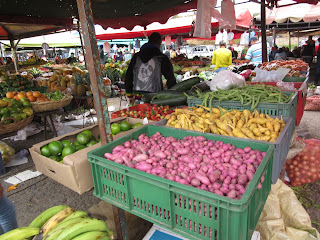











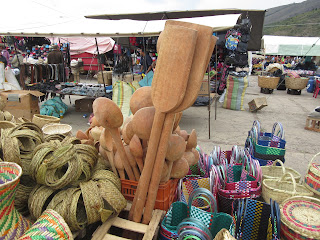




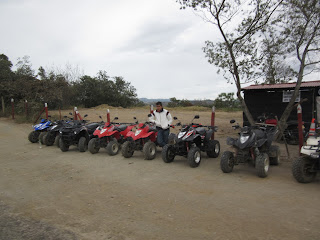









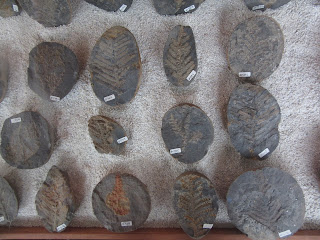








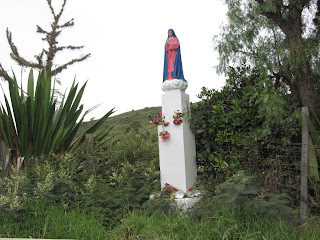















































































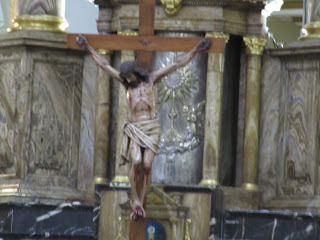









I have always loved fresh markets, I believe that the taste is so different compared to the farmer markets here.
ReplyDeleteA woman after my own heart, Hadassah, as we also love visiting farmers' markets wherever we are in the world!
ReplyDeleteAnnie